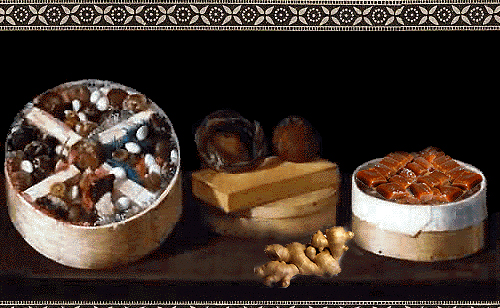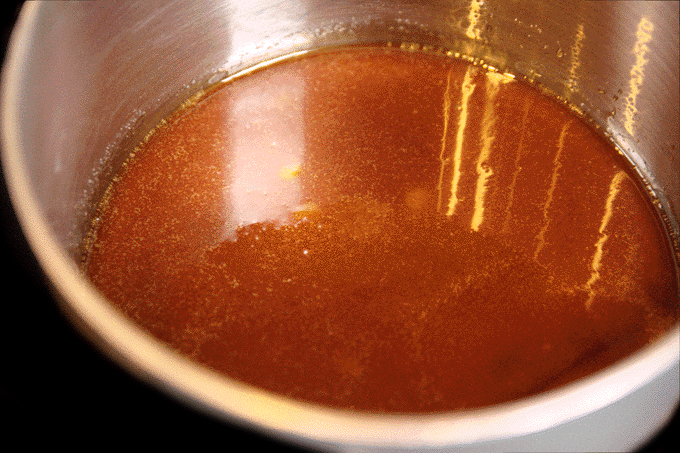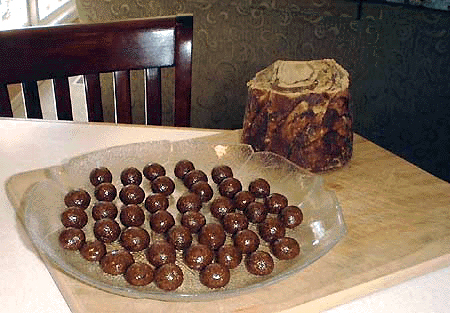The Glories of Raghava's Bag, Part 5
BY: SUN STAFF - 24.2 2023

A journey through the nectarian contents of Raghava's Bag.
Sweetmeats
The next description of the foodstuffs found among the raghavera-jhali is in Caitanya-caritamrta Antya lila 10.17-21:
"Damayanti powdered coriander and anise seeds, cooked them with sugar and made them into small sweetmeats that were shaped like small balls.
She made balls of sweetmeats with dried ginger to remove mucus caused by too much bile. She put all these preparations separately into small cloth bags." (Caitanya-caritamrta, Antya lila 10.22-23)
In these two verses, we find a nice description of the cooking process Damayanti use to make the sweetmeats for Lord Chaitanya. Even when coriander and anise are ground fine they remain quite grainy. This is described in the sloka by the word tandula:
Antya 10.22
dhaniya-mauharira tandula gunda kariya
nadu bandhiyache cini-paka kariya
SYNONYMS
dhaniya -- of coriander seeds; mauharira -- of anise seeds; tandula -- grains; gunda kariya -- grinding to a powder; nadu bandhiyache -- rendered into laddus; cini-paka kariya -- cooking with sugar.
TRANSLATION
Damayanti powdered coriander and anise seeds, cooked them with sugar and made them into sweetmeats in the shape of small balls.
Once the aromatic spice grains are powdered, cooking them with sugar gives the needed consistency for making sweetmeats, or small balls. While sugar is often cooked with a little water or milk into order to get caramel, sugar that is simply cooked in a heavy pan will melt into a rich golden substance.

Carmelized Sugar
While cooking down the basic preparation, converting powdered spices and cooked sugar into a candied melt, one of the most important techniques for the cook is getting the right consistency. The longer or 'harder' the sugar mixture is cooked, the harder the confection will be when it cools. Less cooking will result in a softer confection. Even apply too much heat for a short time can cause the sugar to 'seize', and produce a very hard mixture.
Described in Antya 10.23-24 are two varieties of sweetmeats Damayanti made and packaged separately in small bags. These joined what must have been a great many other bags of various sizes, all packed together, no doubt into a host of bags and tiffins, referred to collectively as Raghava's Bag.
Antya 10.23
sunthi-khanda nadu, ara ama-pitta-hara
prthak prthak bandhi' vastrera kuthali bhitara
SYNONYMS
sunthi-khanda nadu -- sweetmeat balls made with dried ginger; ara -- and; ama-pitta-hara -- which removes mucus caused by too much bile; prthak prthak -- separately; bandhi' -- packaging; vastrera -- of cloth; kuthali -- small bags; bhitara -- within.
TRANSLATION
She made sweetmeat balls with dried ginger to remove mucus caused by too much bile. She put all these preparations separately into small cloth bags.
The ginger sweetmeats are described as being specifically intended to help the Lord's digestion, much like the bitter vegetables described in the previous slokas. The coriander and anise sweetmeats would also serve as good digestive aids, although they might be thoroughly enjoyed just for their flavour.
The first sweetmeats, of coriander and anise, were cooked down with sugar, so we know they were very sweet. But the ginger digestive balls don't mention sugar being used, so the aromatic sweetmeats could easily be considered confectionary treats, and the ginger balls a more medicinal preparation.
The word 'sweetmeat' typically refers to a candied or crystalised fruit or nut meat. The first known use of the words was in the 14th century, and the word was never used in reference to an animal product. Rather, the 'meat' refers to the body of the fruits or nuts in use. Sweetmeats fall into the 'confectionary' category, but so do digestive aids, not intended to sweet or particularly pleasurable.
Here's a recipe we adapted for sweetmeats:

'Damayanti's Sweetmeats' and block of Jaggery
Damayanti's Sweetmeats
Anise, ground, 1-1/2 Teaspoons
Coriander, ground, 2 Teaspoons
Jaggery, 1/4 Cup
Khas Khas (tiny white poppy seed), 1 Teaspoon
Ghee, 1 Teaspoon
Heat the ghee at medium heat, add the jaggery and stir till it's mostly melted down. Add the anise and coriander, and stir constantly as the mixture cooks. When the jaggery just starts to thicken, add the khas khas. Continue cooking till the mixture pulls away from the side of the pan. Remove from heat and set aside till the mixture cools enough to handle (but don't let it cool too much!). As soon as you can work it, roll the mixture into small balls. Set on a plate, not touching one another, till all the sweets are rolled. Chill until ready to serve. When cold, these are like hard candies. When allowed to come to room temperature, they're soft and chewy.... or anywhere in-between. We like to offer them at the mid-point of a feast. They're also nice to put on the sweets plate as an end-of-meal digestive, or drop into a cup of hot herbal tea as a combination sweetener/digestive.






































